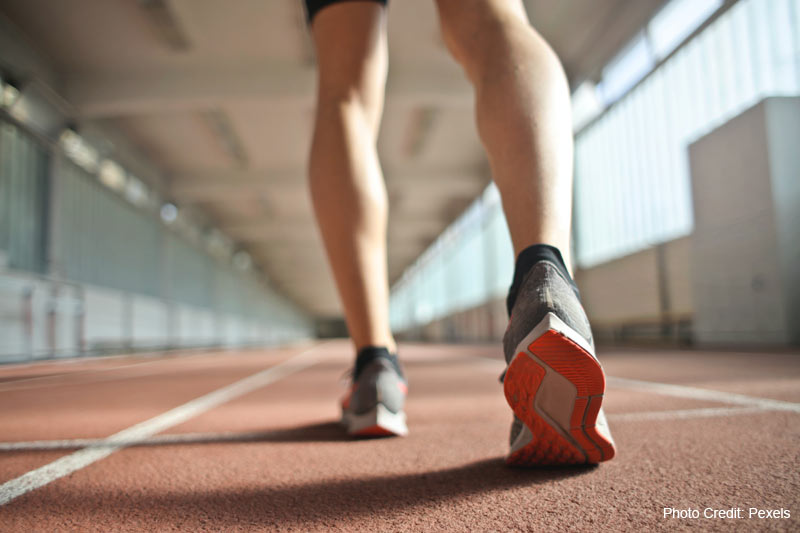Tips to Deal with Post-Workout Soreness
Achieving a greater level of fitness and health is an admirable goal – and one that many people share. But muscle soreness is often a challenge, especially when starting a new whole body EMS workout regimen or taking your workout to the next level.
And while it might be tempting to take a few days off to let your muscles recover, it’s important to remember that this mild soreness is an excellent indication that you are on the right track to becoming more fit. So, rather than delaying additional workouts, it’s a great idea to adopt strategies to minimize the soreness of your muscles so you are ready to tackle another fitness challenge!
The following tips can help ease sore muscles after a rigorous whole body EMS workout and prepare them for another vigorous session.
- Engage in a Recovery Activity: Everyone knows that after a strenuous workout, it’s a good idea to take some time to slowly wind down, rather than stopping at the height of your workout. Evidence shows that when you follow a high-intensity workout with twenty minutes of low- or moderate-intensity activity like a brisk walk you will experience a reduction in post-workout soreness. An additional benefit is that you can further increase your boost in strength by incorporating this into your workout routine. These recovery activities aid in the inflammatory process, which is why they help with soreness.
- Getting a Massage: Honestly, who doesn’t want a massage after a great workout? But if you need further evidence that a post-workout massage is beneficial, consider a 2015 study that found that massaged muscles contain more blood vessels than those that do not receive massages. An increase in blood vessels means you get increased blood flow, which aids in the muscle’s ability to heal. The quicker a muscle heals, the less pain and soreness you feel. On top of this benefit, massaged muscles often contain only about half the scar tissue than non-massaged ones do. This data demonstrates the effectiveness of post-workout massages but be sure to do it quickly after the workout. Immediate massage is far more effective at promoting tissue regeneration than if it is delayed. Scheduling a massage within 48 hours of the workout is ideal.
- Use Contrasting Temperatures: While many people use heat to reduce muscle pain, that strategy of reducing soreness isn’t nearly as effective as leveraging temperature variations. When you take hot and cold showers, you can greatly reduce inflammation throughout all muscles in your body. A good strategy is to spend five minutes in the shower, alternating between 20 seconds of cold water followed by ten seconds of hot water. Your muscles may feel much more relaxed – and less sore – after this process.
- Consume Certain Foods: Some foods have anti-inflammatory properties, such as tart cherries, curcumin, and fish oils, among others. Tart cherries and raspberries are rich in anthocyanins, which decrease excess inflammation when taken in the days leading up to a workout and after one. Curcumin also reduces inflammation and can easily be taken as a supplement. Consuming coffee is another option to reduce muscle soreness and fatigue. Coffee also has enormous benefits for endurance and strength training. It reduces post-workout soreness by functioning as an analgesic or painkiller. If you drink a cup or two of coffee before a rigorous workout, you can greatly reduce muscle soreness.
- Electrical Muscle Stimulation: Electrical muscle stimulation can speed muscle recovery to reduce muscle soreness and ease discomfort between workouts. It can even support joint recovery. This method works in the same manner as recovery workouts. A whole body EMS workout keeps muscles moving after a workout by using electrical pulses. These electrical pulses promote increased blood circulation, which flushes out toxins, including lactic acid, that can build up after intense workouts. Whole body EMS workouts also help prevent muscle injury and protect joints by increasing blood to these areas, breaking up scar tissue, and strengthening the muscle fibers. The intensity and frequency of EMS therapy can be adjusted based on where you are at in training and what your fitness goals are. But individuals can benefit from its use at any time as it decreases post-workout soreness and helps the muscle fibers recover to be stronger than they were before the workout.
Muscle soreness can inhibit training because few people want to engage in another difficult workout when they are still sore from the last way. These strategies can help muscles recover quicker and reduce the soreness to help you get back to working out faster!
WB20 provides a whole body EMS workout in 20 minutes with the next evolution in fitness. Our physical trainers can work with you to target your areas of concern. With the latest technology, our team can help you increase your strength, improve your metabolism, and work 95% of your muscles. Workout smarter, not harder.

